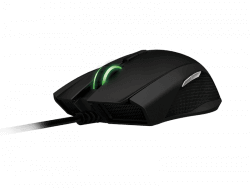 |
 |
|
| Diamondback | Taipan | |
| Specification: | ||
| No. of Buttons: | 7 | 9 |
| No. of Macro Keys: | ||
| No. of Game Profiles: | Via Software | |
| Connection: | USB | USB |
| Cable length: | 2.1 m, braided fiber | |
| Wireless: | ||
| Battery: | ||
| Colour: | Black | Black |
| Ambidextrous: | Yes | Yes |
| Coating: | ||
| Software: | Synapse | Synapse 2.0 |
| Weights: | No | Np |
| Switch: | ||
| Feet: | ||
| Sensor: | ||
| Type: | Laser | Laser |
| Brand: | Avago | |
| Model: | ADNS-S9818 | |
| Processor: | ||
| Lift off distance: | ||
| DPI/CPI: | 16,000 dpi | Upto 8200dpi |
| Memory Size: | ||
| Max tracking speed: | 210 ips | Up to 200ips |
| Max acceleration: | 50 g | 50g |
| Response time: | 1,000 Hz | 1000Hz Ultrapolling / 1ms response time |
| FPS: | ||
| NVIDIA Reflex: | ||
| Lighting: | ||
| Colour Options: | Chroma lighting | Green |
| Lighting Effect: | Wave, Spectrum Cycling, Breathing, Static, Reactive | |
| Dimensions & Weight: | ||
| Dimension (LxWxH): | 125 x 60 x 30 mm | 124 x 63 x 36 mm |
| Weight (grams): | 89 g | 132g |
| Weight w/o cable: | 95g | |
| Also compared to: | Also compared to: |